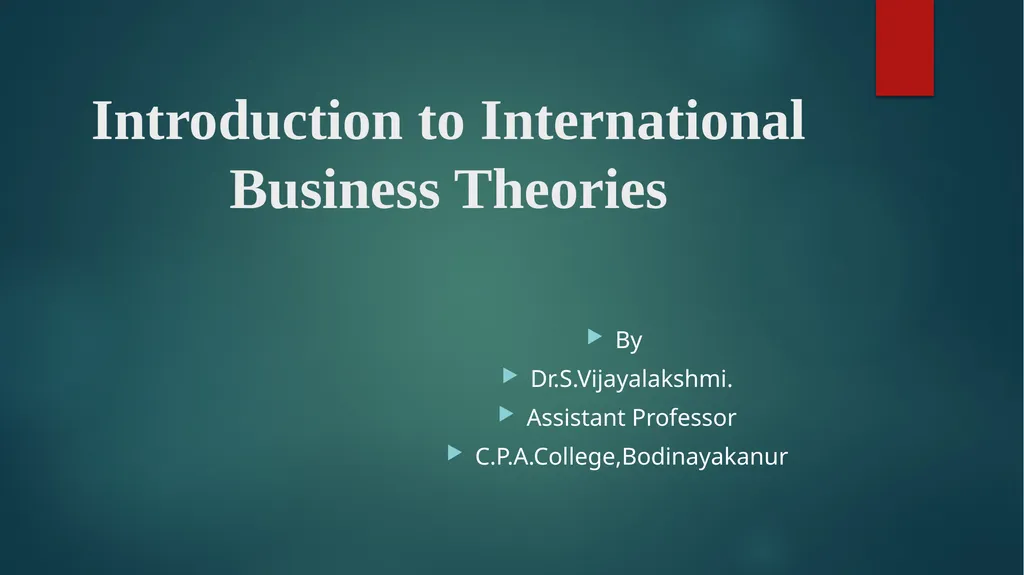
Introduction to International Business Theories By
Author: mitsue-stanley | Published: 2025-05-24
Description: Introduction to International Business Theories By Dr.S.Vijayalakshmi. Assistant Professor C.P.A.College,Bodinayakanur Introduction to International Business Theories Definition: International Business theories seek to explain why and how
Download Presentation
Download the PPT/PDF: Download
Transcript:
Loading transcript…